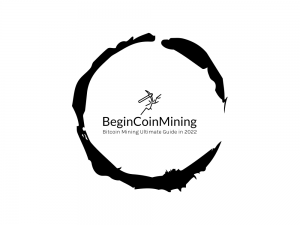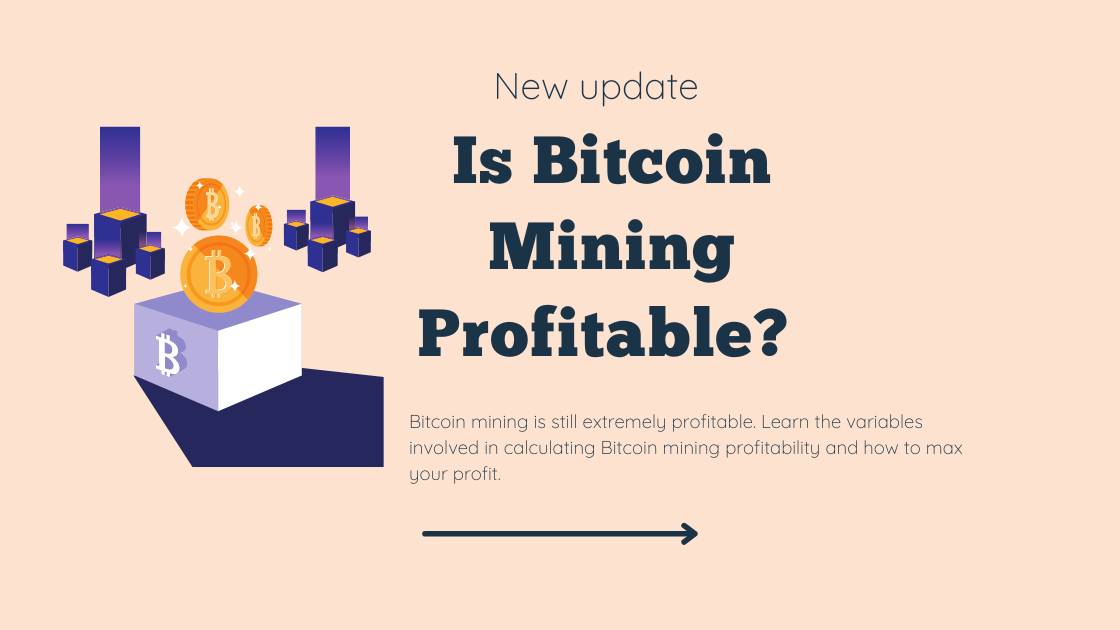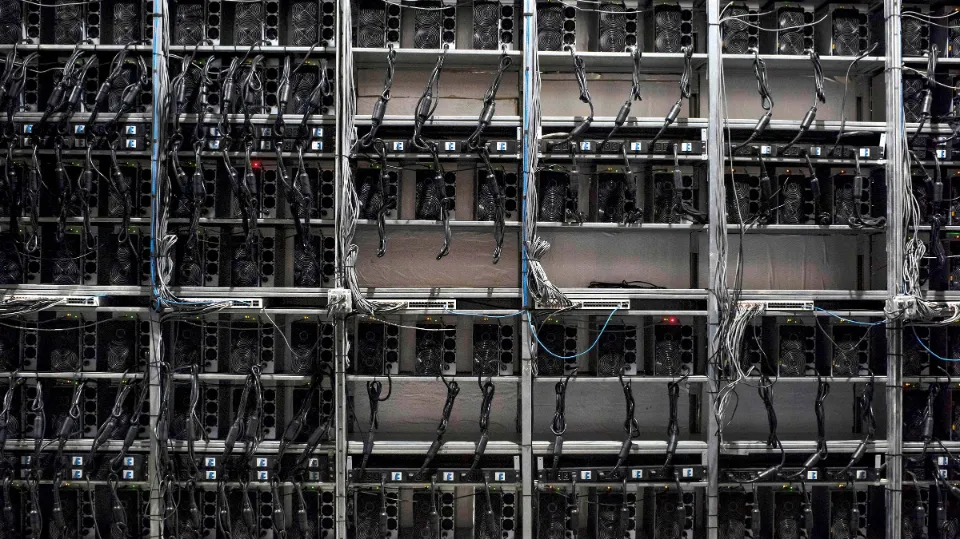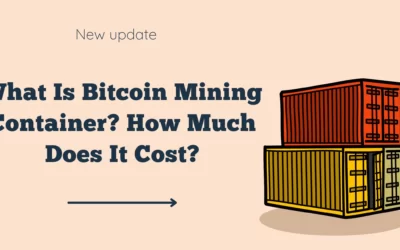Bitcoin mining is still extremely profitable in 2023. Learn the variables involved in calculating Bitcoin mining profitability and how to max your profit.
Before determining whether it’s even possible for you to profit from bitcoin mining, if you’re motivated to learn and you want to get a semi-passive income from bitcoin, there are a few fundamentals to understand.
Key Takeaways
- Bitcoin mining is still extremely profitable in 2023.
- Bitcoin miners are currently mining around $20 million worth of Bitcoin per day. That’s $600 million per month.
- A mining machine costs $2,000-$20,000, making it difficult for anyone but professional miners to mine.
- Bitcoin mining can be profitable if you invest in the right tools and join a bitcoin mining pool.
How Do Bitcoin Miners Calculate Earnings?
Most likely, you’ve heard alarming tales about the energy requirements of bitcoin mining.
Whether or not the impact is exaggerated by the media, it is a fact that energy consumption is the fundamental cost of mining. To be profitable, mining must generate more money than its costs, plus the initial investment in mining equipment.
Bitcoin Mining Equipment
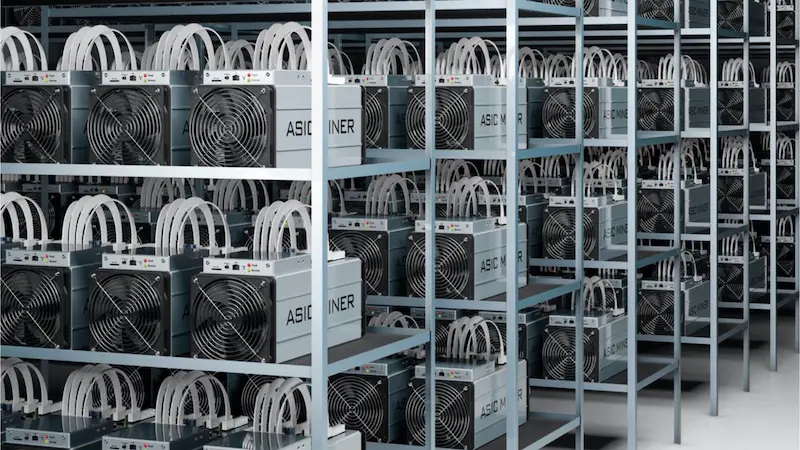
Profitability heavily depends on the cost of Bitcoin mining hardware. According to reports, the costs of top and mid-tier application-specific integrated circuit (ASIC) miners, the specialized chips made for Bitcoin mining, have fallen by about 70% from their all-time highs in 2022, when units fetched between $10,000 and $18,000 each.
“GPU costs are rapidly decreasing, which translates to higher mining profitability,” Kline says.
Additionally, according to Andy Long, CEO of cryptocurrency mining company White Rock Management, lower Bitcoin prices cause less productive miners to cease operations as they begin to lose money. On the other hand, as prices fall, fewer overall miners mean more productive miners start to earn more Bitcoin.
“The genius of the system is the difficulty mechanism, which automatically maintains block production with a new block every 10 minutes on average. Therefore, at lower prices, some miners will give up. But there will always be efficient miners with high-performance equipment that will keep securing the network,” Long says.
Read More: ASIC Miner vs GPU Miner
Bitcoin Network Hashrate
Every second of the day, millions of attempts are made to solve hashes by all the computers connected to the Bitcoin network in order to mine Bitcoins. The number of calculations that can be performed per second is measured by a hashrate, which can range from billions to quadrillions to quintillions. As an illustration, 1 trillion hashes are performed every second in a terahash.
Hashprice, which is expressed in dollars per terahash (TH) per second over the previous 24 hours, is used to calculate the profitability of Bitcoin mining. That measurement’s abbreviation is USD/TH per second per day if you add all of those together. Hashprice is calculated using a number of factors, including network complexity, bitcoin price, block subsidy, and transaction costs.
In December 2017, at the height of the crypto market boom, Bitcoin’s profitability reached a peak of approximately $3.39/TH per second. At its peak in late October 2021, the hashrate for Bitcoin was $0.412/TH per second. Just $0.104/TH per second remains as of right now.
The total mining activity is still very close to all-time highs, despite a decline in the profitability of Bitcoin mining. The network’s hashrate is currently around 202.3 million TH/s, up from 6.5 million TH/s in early August 2017 and 72.9 million TH/s a year ago.
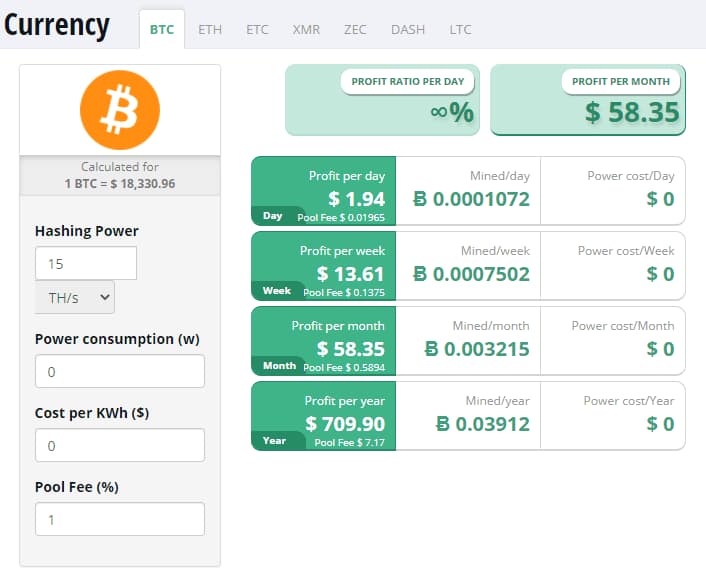
Mining Revenue
Depending on the price of bitcoin in February 2022, one Bitcoin mining device, or “ASIC,” like the Whatsminer M20S, generates about $12 in daily revenue. The revenue from mining Bitcoin is twice as much as mining with the same number of GPUs you could purchase for one ASIC. This is evident when comparing this to the revenue from mining a different crypto currency, such as Ethereum, which is mined with graphics cards. For about the same price as one Whatsminer M20s, thirteen AMD RX graphics cards are available.
You can imagine the miners as a decentralized version of PayPal, enabling accurate recording of each transaction while earning a small profit to support system operation.
In addition to the fees that bitcoin users pay the miners for securely logging their transactions onto the blockchain, bitcoin miners also receive a payment known as the block reward, which they keep for themselves.
Block Reward
Approximately every ten minutes, the owner of the mining device that finds the new block the fastest receives a certain amount of freshly created bitcoin.
In 2009, Satoshi Nakamoto initially set the mining reward at 50 BTC and encoded any future decreases to the reward. Every four years, the Bitcoin code is programmed to reduce this payout by half. Late in 2012, it was cut in half to 25 BTC, and then again in the middle of 2016, it was cut in half again to 12.5 BTC. The block reward was most recently halved three times, in May 2020, to 6.25 BTC.
Transaction Fees
Transaction fees that users of the cryptocurrency pay when sending and receiving bitcoins are the second source of income for Bitcoin miners.
This is how wonderful Bitcoin is. Each mining device has a copy of an unalterable blockchain that contains a record of every transaction.
The miners who operate Bitcoin are the ones who keep the ledgers, and they also get to keep a portion of the transaction fees. Bitcoin does not rely on a central bank to do this.
Taxes on Bitcoin Mining Profits
Naturally, while making money from mining Bitcoin is uncertain, paying taxes on your mining rewards is. It is crucial to use crypto tax software to keep track of everything and ensure that you are still earning enough money after taxes. Every miner needs to be aware of the local tax laws that apply to Bitcoin mining, which is why it is crucial for everyone to do so.
Read More: How To Report Bitcoin Mining On Taxes
How to Get More Profit from Bitcoin Mining
The first is that there are many variables in Bitcoin mining. Due to this, purchasing bitcoin on an exchange may be a more convenient way to turn a profit. Nevertheless, mining bitcoin has the potential to be more profitable than simply purchasing it and “hodling” (a term for not selling it) it. This is provided that the process is done effectively.
The price of Bitcoin itself is one of the key factors for miners. You will need to mine enough bitcoin to cover your ongoing expenses and earn back your initial investment in the machine if, like the majority of people, you pay for your mining hardware and electricity in dollars.
Naturally, the price of bitcoin has an effect on every miner. Cheap electricity, affordable and effective hardware, and a good mining pool, however, are what set profitable miners apart from the rest.
1. Efficient Hardware
The Whatsminer M20S has been used as an example of the type of equipment you will need to mine bitcoin thus far in this article. There are now many hardware manufacturers to choose from.
The cost of hardware varies from manufacturer to manufacturer and is largely determined by how little energy the machine consumes relative to the amount of computing power it generates. You will mine more bitcoin as your computer power increases. Your monthly expenses will be lower the less energy is consumed.
Miners should consider the machine’s profitability and durability when deciding which investment to make.
Profitability is determined by the machine’s price per TH, how many watts the machine uses per TH, and your hosting costs.
Tore Thornas Mining Expert
Longevity is determined by the production quality of the machine. It makes no sense to buy cheaper or seemingly more efficient machines if they break down after a few months of running.
It often makes sense to prioritize “price per TH” over “watts per TH” if the hosting cost is low enough because lower operational expenses (OpEx) will offset any efficiency loss on your machine. Conversely, if the hosting cost is high, it makes sense to prioritize “watts per TH” over “price per TH.”
The Whatsminer M20S and other Whatsminer models are made by MicroBT, which currently has the lowest failure rate.
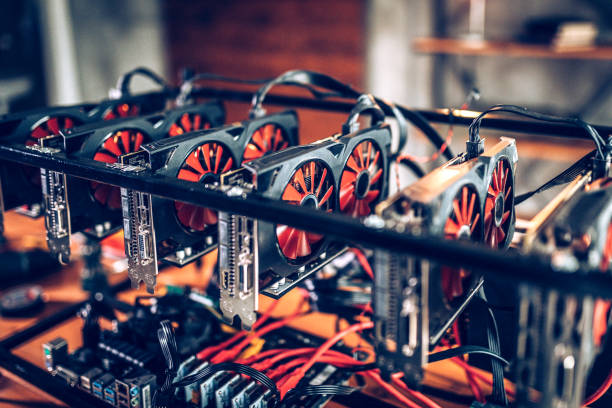
Bitcoin Mining Hardware Turnoff Prices
A helpful way to conceptualize hardware is to estimate the level at which BTC would have to decline before the machines would cease to be profitable. For you to earn more bitcoin from mining than you would have by simply purchasing the cryptocurrency, you need your machine to remain profitable for a number of years.
The following table demonstrates that the vast majority of the most advanced machines would continue to be profitable at a bitcoin price between $5000 and $6000. If they are powered by electricity that costs less than $0.05 per kWh, some machines could manage a drop below $5,000.
Sadly, even in China, the majority of older machines are no longer profitable. The Bitmain S9 has been in use since 2016, and interestingly, they are still in use in Iran and Venezuela, where the cost of electricity is so low that the risk of confiscation is outweighed. As access to solar and wind energy in North America increases, there might eventually be more reliable sources of electricity for under two cents.
Sending your machines to those farms directly is your only chance as an individual miner to compete with operations that have access to such cheap electricity. But this isn’t a service that many farms provide.
2. Cheap Electricity
Prices for electricity vary from one nation to another. In order to promote economic expansion, many nations also charge less for industrial electricity. This implies that the cost of electricity for a mining farm in Russia will be half what it would be for mining in the USA.
Practically speaking, if your electricity costs $0.045 per kWh and you live in a country like China, Russia, or Kazakhstan, running a Whatsminer M20S for a month will cost you around $110. With those electricity prices, you can see from the table below that you would earn $45 per month in May 2020.
However, you would be operating the machines at a loss from the outset and it would not be profitable to mine under these circumstances with the typical home electricity price in the USA being $0.12 per kWh.
However, miners looking to use up flare gas being wasted at oil well sites are becoming more interested in doing so in the US. It is very affordable if you can harness that energy. However, you will undoubtedly lose money if you mine bitcoin on your own at home.
3. Reliable Mining Pool
Nowadays, every miner must use a mining pool in order to mine. The network of Bitcoin mining equipment is so big that your chances of regularly finding a block (and earning the block reward and transaction fees) are very slim, whether you’re mining with one machine or a thousand.
Slush Pool and F2Pool are the two pools with the most history. One of the biggest mining pools for bitcoin, F2Pool contributes to 15% of the network as a whole.
PPS+ is the payout system used by F2Pool. Because PPS+ pools pay transaction fees and block rewards to miners regardless of whether the pool itself successfully mines each block, they remove the risk from the miners. The miners are typically paid by PPS+ pools at the conclusion of each day.

PPS+ pools determine how much to pay out to the miners in their pool in this manner. Here comes the science part…
A WhatsMiner M20S ASIC miner with 68 TH/s will generate approximately 0.000702 BTC per day before pool fees if the Bitcoin Network Hashrate is 85 EH/s (85,000,000 TH/s).
0.000702 BTC is calculated using the following formula: 68 (miner hashrate) x 85,000,000 (network hashrate) x 144 (number of blocks per day) x 6.25 (block reward).
Let’s assume that the pool fee is 2.50% because it typically ranges from 2.50 to 4.00%; as a result, the net mining income is equal to 0.00068445 BTC.
The daily revenue for this M20S is $6.16 if BTC is priced at $9,000 per unit.
Read More: How to Join a Bitcoin Mining Pool: Simple Guide 2022
4. Fees When Selling Bitcoin
Fees paid to sell the Bitcoin one mines are a frequently disregarded aspect of mining profitability. You might have to sell your coins on a retail exchange like Kraken or Binance if you’re a part-time miner. It really just depends on the fee structure of the exchange and the current state of the orderbook whether your fees are high or low at any given time.
However, if you work as a professional miner like F2 or Bitmain, you probably have really advantageous agreements with OTC desks to sell your coins for little to no fees, depending on the market situation. Some miners receive payments for their coins that are even higher than the spot price. In either case, because professional mining operations deal with Bitcoin on a large scale, they have more negotiating power to secure favorable terms, and this is true across the board for all purchases of goods and services, not just electricity.
If you believe you have what it takes to mine profitably, we advise you to first use the mining profitability calculator to confirm.
How Many Bitcoins Will Be Mined in 2022?
At the moment, daily bitcoin mining produces about 900 new coins. A total of 328,500 bitcoin could be mined this year if this situation held true for the duration of 2022.
It’s interesting to note that increasing the number of people mining Bitcoin does not result in more coins being produced. One block is currently mined every 10 minutes, with the block reward currently set at 6.25 (this will hold true until the next Bitcoin halving). A higher hash rate results from more competition for blocks, but the rate at which new coins are created stays constant.
Is Bitcoin Cloud Mining Profitable in 2022?
Bitcoin cloud mining will always be a viable option to generate income without having to fork over cash for equipment and related expenses, and the year 2022 will be no exception. Along with the potential for financial gain, mining in the cloud platform significantly lowers risk.
Final Thoughts on Bitcoin Mining Profitability
Calculating the profitability of Bitcoin mining involves a number of factors.
While many of those factors have deteriorated during the crypto winter of 2022, the downturn has assisted in ridding the market of the least productive miners and allowed the front-runners to grow their market share in anticipation of what they hope will be the next cyclical upswing in crypto prices and mining profitability in the years to come.
Bitcoin Mining Profitability FAQs
What is Bitcoin Mining?
The process by which bitcoin is validated and recorded on the blockchain is known as mining. To complete intricate mathematical operations known as hashes, bitcoin miners use powerful computers. Although mining Bitcoin requires a significant amount of processing power, miners are rewarded with 6.25 BTC, or about $143,000, for each block of transactions they successfully mine.
While anyone technically has the ability to mine Bitcoins, the majority of Bitcoin mining is carried out by businesses using massive commercial mining setups that include data centers with specialized servers. These mining farms are frequently constructed close to accessible energy resources, such as solar energy farms, oil and gas wells, and hydroelectric dams.
How Much Does a Crypto Miner Make?
Due to rising electricity prices, individual mining is becoming less common. To increase their chances of receiving the block rewards, crypto miners frequently join mining pools. For setting up the mining pool, the pool also charges a fee and divides the reward among all of the participating miners. Every ten minutes, the Bitcoin network generates a new block, rewarding the miner who successfully verifies it with 6.25 bitcoins. If a mining pool successfully mines a bitcoin, the reward is divided equally among everyone in the pool.
Can You Mine Direct to An Exchange?
You still need to think about where to store the bitcoin you mine even if you have invested the time to learn about mining and have located a location with inexpensive electricity for your machines.
While mining directly from a pool to an exchange is technically possible, we advise keeping your bitcoin in a wallet where you have access to the private keys.
Is CPU Mining Profitable?
No, and with regard to Bitcoin, it hardly ever was. CPU mining has never been profitable unless you were among the very first users to mine Bitcoin. There was a time when one could profitably mine Bitcoin with GPUs, but again…today, you really must have. To earn any money mining bitcoin in 2020, you’ll need an ASIC and a contract with a power supplier.
What Are the Advantages of Bitcoin Mining?
Proven track-record. Since it began 13 years ago, PoW. The Bitcoin network hasn’t experienced a significant security issue in that time. Many in the sector think this is because of the high hash rate, which would necessitate a tremendous amount of computing power. Smaller PoS and PoW networks have both previously been susceptible to hacking attacks that could destabilize them.
Security using cryptography. However, despite successful attacks on some smaller networks, hackers have not been able to compromise large PoW networks like Bitcoin. The best option may be PoW when entrusting a network with large sums of money. Attacking a PoW blockchain is challenging; as a result, would-be hackers are frequently happy to settle for the more legitimate role of miner.
What Are the Disadvantages of Bitcoin Mining?
Energy usage. A lot of electricity is used by PoW. This is cited by detractors as PoW’s primary failing. Some claim that the energy consumption of the Bitcoin network equals that of a small nation. Despite the fact that much of the energy used by Bitcoin is now sourced from sustainable sources, it is still a significant amount.
Barriers to entry. With time, PoW mining becomes more challenging, making it more difficult for the average person to participate. Distributing tasks and profits among many users is a key tenet of a decentralized PoW network. However, as mining becomes more complex and challenging, a small number of powerful corporations—who can afford to construct warehouses packed with mining equipment—take control of the industry.
Is It Profitable to Mine Altcoins?
The profitability of cryptocurrency mining depends on your setup. It might be more profitable if you use an ASIC or a powerful GPU.
Crypto mining can still be profitable even if your electricity is inexpensive or free. The inflation rate and the increased competition for the bitcoin “prize” are two other factors.
You can forecast the profitability of cryptocurrency mining using a calculator like WhatToMine because there are a lot of alternative coins that are available for mining. The website displays a number of coins that have a daily revenue potential of about $2. While this is not a great return on capital investment, you might get “free” tokens that might appreciate in value over time.
Is It Worth It Mining in 2022?
Is mining for cryptocurrencies still lucrative in 2022? Yes it is. The new mining route is better and more advantageous, even though the old mining method is very expensive and no longer profitable after expenses. The best thing to do is invest in mining companies to mine your coins for you in exchange for profits and percentages of mining fees.
Is It Worth Buying a Mining Rig Now?
Yes, it is still worth buying a mining rig in 2022. Of course, the profit margin is based on the cost of electricity you are purchasing. The profits increase as the cost of electricity decreases.
